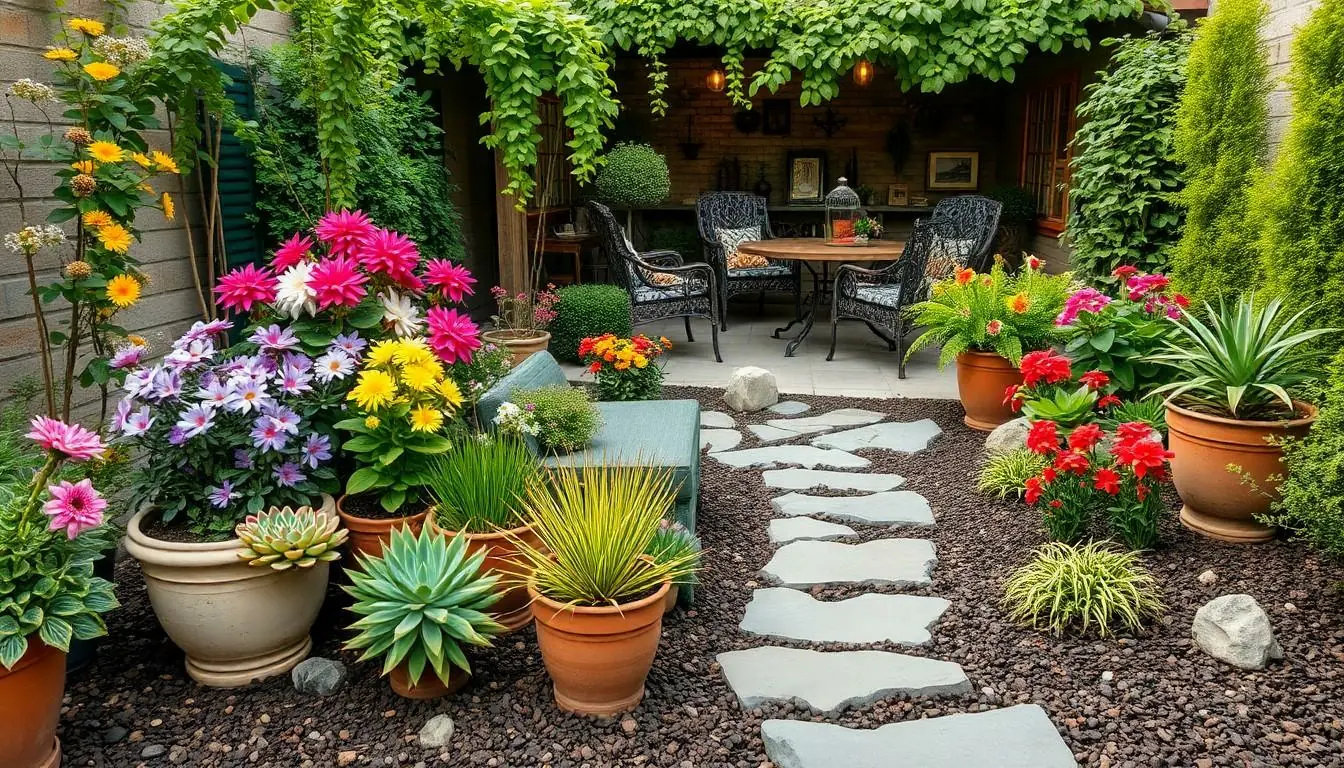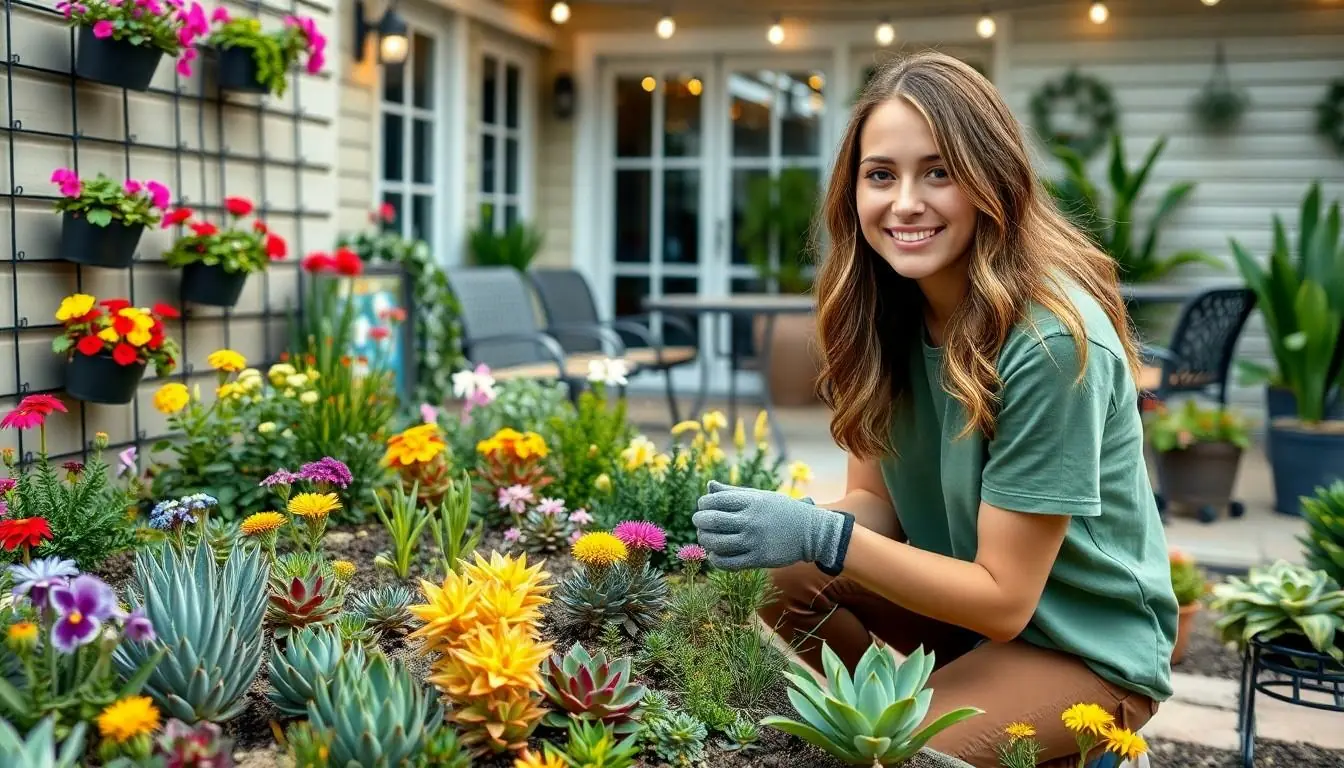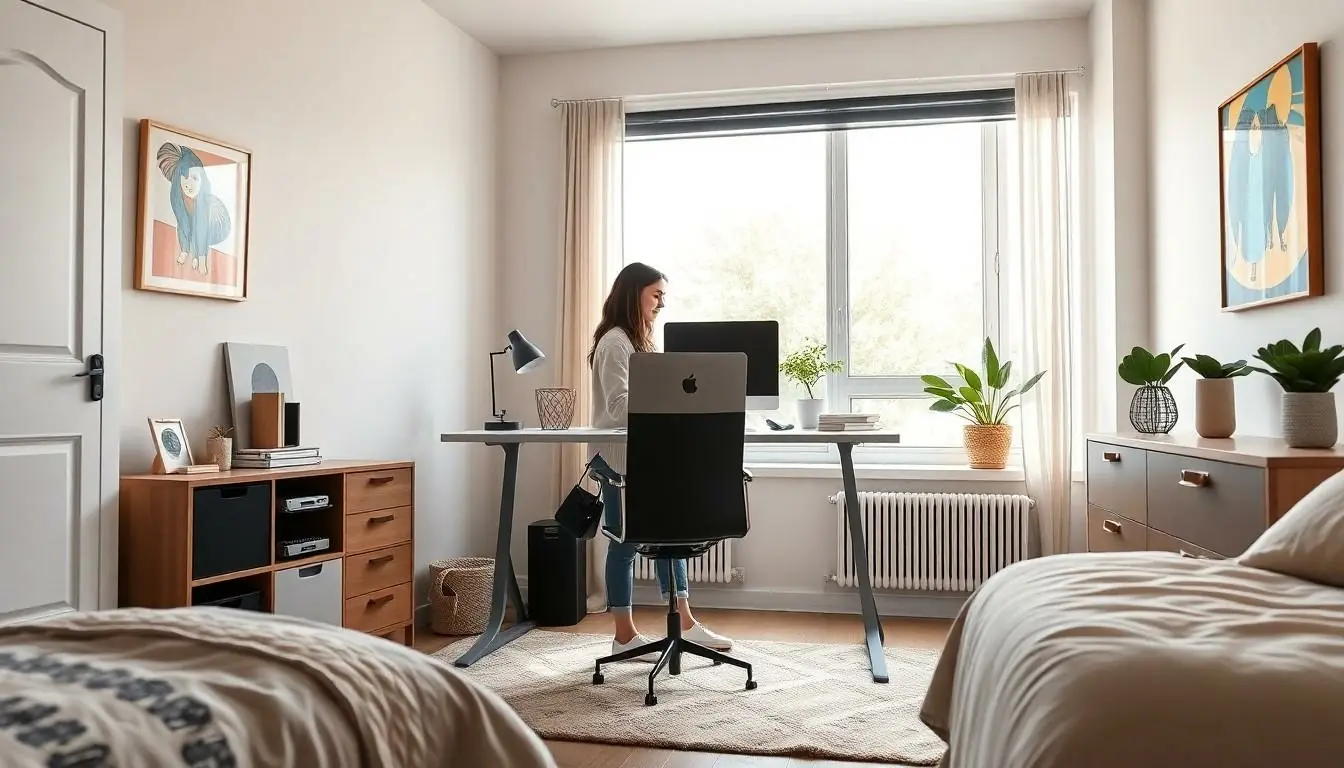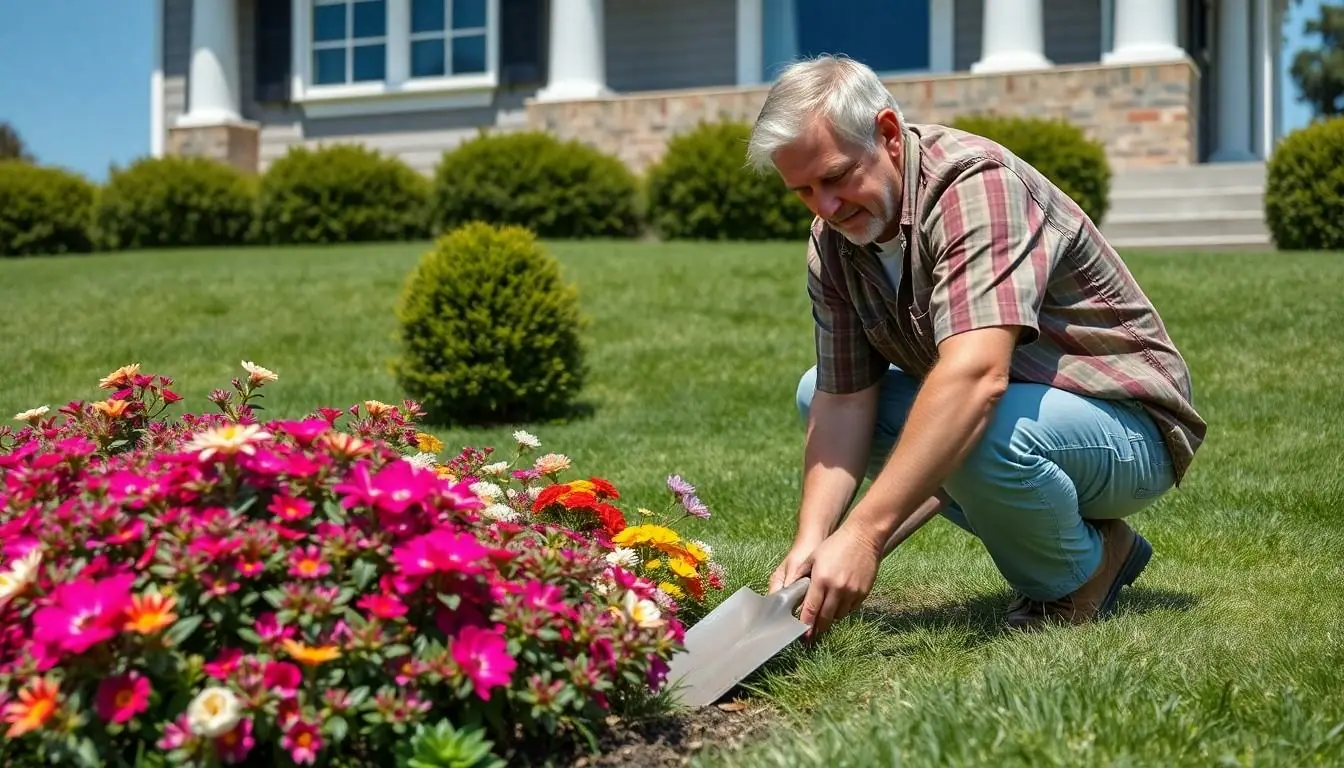In a world where bigger often seems better, small houses are making a big splash. But just because the square footage is cozy doesn’t mean the landscaping can’t be grand. With a sprinkle of creativity and a dash of humor, transforming a tiny yard into a lush oasis is not just possible—it’s downright fun!
Imagine stepping outside your petite palace to a vibrant garden that feels like a botanical wonderland. Small house landscaping isn’t just about fitting in; it’s about standing out. From vertical gardens to clever use of space, every inch can be a canvas for your green thumb. So grab your gardening gloves and let’s dive into the world of small-scale landscaping that’s bursting with personality and charm. After all, who says you need a mansion to have a majestic garden?
Table of Contents
ToggleImportance Of Small House Landscaping
Small house landscaping significantly enhances outdoor aesthetics. An appealing garden adds value to the property, creating a welcoming environment. Compact yards allow for creative designs and innovative gardening techniques.
Landscaping maximizes limited space, enabling a harmonious blend of nature and architecture. Incorporating plants like succulents and perennials reduces maintenance while providing year-round beauty. Sustainable practices, such as rain gardens, improve drainage and support local wildlife.
Small gardens can increase outdoor functionality. Decorative elements like pathways and seating areas encourage relaxation and social interaction. Furthermore, thoughtful plant selection influences microclimates, enhancing comfort in outdoor spaces.
Using vertical gardening techniques optimizes space by utilizing walls and fences. This approach introduces greenery without sacrificing square footage, offering a lush appeal in tight areas.
Colorful flowers and strategic landscaping create focal points, guiding the eye through a small space. Ornamental grasses and shrubs add dimension and texture, making gardens interesting and vibrant.
Emphasizing greenery impacts mental health. Research indicates that interacting with plants reduces stress and promotes well-being. Consequently, well-planned landscaping provides not only beauty but also psychological benefits.
Efficient water use through smart irrigation systems supports plant health while conserving resources. This improves environmental sustainability, directly contributing to eco-friendly living concepts.
Small house landscaping plays a vital role in enhancing property aesthetics, functionality, and overall well-being. Creative designs transform limited spaces into cherished outdoor sanctuaries.
Key Elements Of Small House Landscaping

Small house landscaping includes essential components that maximize space and enhance beauty. Focusing on specific elements ensures a vibrant, inviting outdoor area.
Plants And Foliage
Choosing the right plants adds life to small yards. Low-maintenance options like succulents and perennials thrive in compact spaces. Incorporating a mix of colorful flowers also creates visual interest. Native plants provide benefits to local wildlife while requiring less upkeep. Vertical gardens offer creative solutions for maximizing greenery in limited areas. Incorporating containers allows for flexibility in placement, enabling easy rearrangement. Grouping plants by size and color improves the overall aesthetic while ensuring proper sunlight exposure. Strategies that emphasize foliage textures can create dynamic layers in landscape design.
Hardscaping Features
Hardscaping features contribute to the functionality of small gardens. Pathways made of stone or gravel guide movement through challenging spaces. Patios provide areas for relaxation and gatherings, enhancing outdoor usability. Retaining walls define sections within the yard and can add visual height. Using mulch or decorative stones reduces weeds while creating clean lines. Integrating furniture into the design promotes social interaction in compact areas. Incorporating raised beds allows for efficient use of space while facilitating planting. Lighting elements improve ambiance and highlight hardscape features at night.
Design Techniques For Small Spaces
Designing for small spaces requires innovative approaches to maximize every inch effectively. Implementing specific techniques can create a more inviting and functional outdoor area.
Maximizing Vertical Space
Vertical gardening offers a practical solution for small yards. Plants can be grown upwards using wall-mounted planters, trellises, and hanging pots. These features accommodate more greenery while keeping the ground clear for activities. The use of climbing plants, like clematis or jasmine, further enhances aesthetics by adding color and fragrance without consuming valuable floor space. Utilizing shelving units or ladders can provide additional opportunities for displaying decorative pots, contributing to the overall charm of a compact garden.
Creating Illusions Of Space
Creating illusions of space transforms small yards into perceived larger areas. Using mirrors strategically reflects light and greenery, giving the impression of depth. Light-colored plant containers and furniture enhance brightness, making areas appear more open and airy. Pathways designed with staggered stones can lead the eye through the garden, creating a flowing atmosphere. Layering various heights of plants also contributes to visual interest, effectively preventing a flat look. Utilizing transparent materials for fencing can maintain views while defining boundaries in a small outdoor space.
Sustainable Practices In Small House Landscaping
Sustainable practices enhance small house landscaping while promoting environmental health. Using native plants represents an effective strategy, as they thrive in local conditions and require less water and maintenance. Rain gardens serve a dual purpose by managing runoff effectively and supporting local wildlife habitats.
Utilizing efficient irrigation systems optimizes water use, reducing waste significantly. Drip irrigation systems target specific plants, delivering water directly to the roots and minimizing evaporation. Composting not only enriches soil quality but also recycles kitchen and yard waste, promoting a circular ecosystem.
Incorporating permeable paving in pathways allows water to seep into the ground, reducing overflow and promoting natural drainage. Choosing environmentally friendly pest control methods, such as introducing beneficial insects like ladybugs, fosters a balanced ecosystem while minimizing chemical usage.
Implementing edible landscaping adds functionality and sustainability to small gardens, providing fresh produce. Herbs and fruit-bearing plants fit well within compact spaces, adding beauty along with utility.
Choosing local materials for hardscaping elements, like stone or wood, minimizes environmental impact associated with transporting goods. Creating a designated compost area within the garden transforms yard waste into valuable nutrients, boosting overall plant health.
Integrating vertical gardening techniques optimizes limited ground space while promoting biodiversity. This method supports different plant types, enhancing aesthetic appeal and functionality. Urban small house landscaping benefits from these sustainable practices, creating vibrant and eco-friendly outdoor spaces.
Small house landscaping proves that even the tiniest of yards can become stunning retreats. By embracing creativity and innovative techniques like vertical gardening and strategic plant selection, homeowners can craft inviting spaces that reflect their personality.
Sustainable practices not only enhance beauty but also contribute to environmental health, making small gardens both functional and eco-friendly. With thoughtful design and the right elements, these compact outdoor areas can serve as cherished oases for relaxation and social interaction. Ultimately, small house landscaping showcases the potential for beauty and charm, regardless of size.







